#Ionic Tutorial for Beginners
Explore tagged Tumblr posts
Text
Advanced Ionic Tutorial: Enhancing Your App with Capacitor Plugins
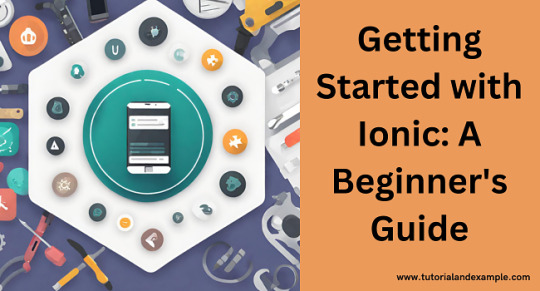
Are you eager to develop your own mobile apps but feeling overwhelmed by the complexities? Fear not! Let's embark on an exciting journey into the world of mobile app development with our Ionic tutorial.
Ionic is a powerful framework that allows you to create stunning cross-platform mobile applications using web technologies like HTML, CSS, and JavaScript. Whether you're a seasoned developer or just starting out, Ionic's intuitive interface and robust features make it easy to bring your app ideas to life.
To begin, simply follow these steps:
Installation: Install Node.js and npm, then install Ionic globally using npm.
Creating Your First App: Use the Ionic CLI to start a new project and choose from a variety of templates.
Adding Features: Explore Ionic's extensive library of UI components to customize your app's look and feel. You can also leverage plugins to add functionality like geolocation, camera access, and more.
Testing and Deployment: Preview your app in a browser or on a device using Ionic's live reload feature. Once you're satisfied, deploy your app to the app stores or as a progressive web app.
With our beginner-friendly Ionic tutorial, you'll be well on your way to becoming a mobile app development pro in no time! Happy coding!
For more detailed tutorials and resources, visit Tutorial and Example.
0 notes
Text
Building Cross-Platform Mobile Apps: A Complete Guide to Ionic Framework

In today’s mobile-first world, businesses are looking for ways to create mobile apps that work seamlessly across both iOS and Android platforms. This demand has given rise to hybrid app development, which allows developers to write a single codebase that can be deployed on multiple platforms, saving both time and resources. One of the most popular frameworks for building cross-platform apps is Ionic. The Ionic framework has become a go-to choice for developers who want to deliver high-quality mobile apps while maintaining a fast and efficient development process. In this guide, we will walk you through the essential features and benefits of the Ionic framework, and how it simplifies hybrid app development.
What is the Ionic Framework?
The Ionic framework is an open-source platform for building mobile applications using web technologies like HTML, CSS, and JavaScript. Unlike traditional native development, where separate codebases are created for different platforms, Ionic allows developers to write once and deploy on both Android and iOS. It provides a rich set of pre-built components and tools that make it easier to build beautiful and functional apps.
At its core, Ionic uses Angular, a popular JavaScript framework, to help developers create highly interactive and dynamic apps. The framework also integrates with other libraries like React and Vue.js, giving developers flexibility to choose the best technology for their project.
Benefits of Using Ionic for Hybrid App Development
Cross-Platform Development
The most significant advantage of using Ionic is its ability to develop cross-platform mobile apps. This means that developers can write a single codebase that will work across both iOS and Android platforms. This saves time and resources since there is no need to maintain two separate codebases for each platform. With Ionic, developers can ensure consistent functionality and user experience across devices.
Faster Development Process
Because Ionic allows developers to use a single codebase, the development process is considerably faster. In addition, the framework comes with a rich library of pre-built UI components, plugins, and tools that simplify the process of building complex apps. Developers can leverage these components to quickly assemble app interfaces, rather than building everything from scratch. This reduces development time and accelerates the release cycle.
Native-Like Experience
One of the key concerns with hybrid apps is the user experience (UX). Many developers fear that hybrid apps won’t provide the same smooth experience as native apps. However, Ionic addresses this issue by offering a set of UI components that mimic the native look and feel of iOS and Android apps. This enables developers to create apps that provide a native-like experience while still using web technologies.
Access to Native Device Features
With Ionic, developers can access native device features like the camera, GPS, and accelerometer using native device APIs. The framework provides a set of plugins that allow you to interact with the device’s hardware without having to write complex native code. This is particularly useful for building apps that require access to sensors, notifications, and other native features.
Open Source and Strong Community Support
Ionic is an open-source framework, which means that developers have access to the source code and can modify it as needed. In addition, the Ionic community is large and active, providing plenty of resources, tutorials, and plugins. Whether you’re a beginner or an experienced developer, the Ionic community is a great place to find solutions to your development challenges.
How to Build an App Using Ionic
Building an app with Ionic is a straightforward process that involves several steps. Here’s a simple overview of how to get started:
Set Up the Development Environment
The first step in building an Ionic app is to set up your development environment. You’ll need to install Node.js, npm (Node Package Manager), and the Ionic CLI (Command Line Interface). Once you have these tools installed, you can create a new Ionic project by running the ionic start command.
Create Your App’s User Interface
Ionic provides a wide range of pre-built UI components that you can use to build your app’s interface. You can choose from different layouts, buttons, forms, and menus to create an attractive and functional UI. Ionic’s UI components are responsive, meaning they will adjust automatically to different screen sizes.
Add Functionality to Your App
After setting up the user interface, you can start adding functionality to your app. You can write JavaScript code using Angular, React, or Vue.js, depending on your chosen stack. Ionic also provides a set of APIs and plugins to help you integrate native device features like camera access, geolocation, and push notifications.
Test the App
Once the app is built, it’s time to test it. Ionic has built-in support for testing your app on different devices and emulators. You can use the ionic serve command to preview your app in a browser and use the Ionic DevApp to test it on physical devices.
Build and Deploy
After thorough testing, you can build your app for production using the ionic build command. Ionic also provides tools to help you deploy your app to the App Store and Google Play Store.
Mobile App Cost Calculator: Estimate the Costs of Building an Ionic App
When planning a mobile app project, understanding the costs involved is essential for effective budgeting. A mobile app cost calculator can help you estimate the costs based on factors like the app’s features, design complexity, and the development platform. It’s important to consider the costs for both development and maintenance. While building a cross-platform app using Ionic may reduce some of the expenses associated with native development, you should still account for costs such as design, testing, and marketing.
If you're interested in exploring the benefits of hybrid app development company for your business, we encourage you to book an appointment with our team of experts. Book an Appointment
Conclusion: Partnering with a Hybrid App Development Company
Building a cross-platform app has never been easier, thanks to frameworks like Ionic. Its ability to create high-performance hybrid apps with a native-like experience makes it a top choice for businesses looking to launch apps on both iOS and Android platforms. If you're ready to build a mobile app using Ionic or need assistance with hybrid app development, partnering with a skilled hybrid app development company can ensure the success of your project. Our experienced team can help guide you through the entire development process, from planning and design to deployment and maintenance.
0 notes
Text
Python vs. JavaScript: Which Should You Learn First?
Choosing the right programming language to learn first can be a daunting decision, especially for beginners. Python and JavaScript are two of the most popular languages today, each offering unique advantages and use cases. This article compares Python and JavaScript to help you decide which one aligns better with your goals.
1. Overview of Python
a. What is Python?
Python is a high-level, general-purpose programming language known for its simplicity and readability. Created by Guido van Rossum in 1991, Python emphasizes code readability with its clean and straightforward syntax.
b. Key Features of Python:
Ease of Learning: Simple syntax similar to plain English.
Versatility: Used in web development, data analysis, machine learning, automation, and more.
Large Community: Extensive libraries and frameworks for various tasks.
c. Popular Use Cases:
Data Science and Machine Learning (e.g., TensorFlow, pandas)
Web Development (e.g., Django, Flask)
Scripting and Automation
Scientific Computing
2. Overview of JavaScript
a. What is JavaScript?
JavaScript is a dynamic programming language primarily used for creating interactive web applications. Developed by Brendan Eich in 1995, it’s the backbone of front-end web development.
b. Key Features of JavaScript:
Versatility: Runs on both client-side (browser) and server-side (Node.js).
Rich Ecosystem: Supports various frameworks like React, Angular, and Vue.js.
Event-Driven: Ideal for interactive web applications.
c. Popular Use Cases:
Web Development (both front-end and back-end)
Mobile App Development (e.g., React Native)
Game Development
Building APIs
3. Ease of Learning
Python:
Python’s simple syntax makes it an excellent choice for beginners.
Requires less code to achieve tasks compared to other languages.
The language’s design minimizes confusion for newcomers.
JavaScript:
JavaScript has a steeper learning curve due to its event-driven nature and complex features like closures and asynchronous programming.
Beginners may find the concept of the DOM (Document Object Model) and the dynamic behavior of JavaScript challenging at first.
Verdict: Python is generally easier for beginners.
4. Job Opportunities and Market Demand
Python:
High demand in data science, machine learning, and AI roles.
Common in backend development and automation.
Frequently used in academia and scientific research.
JavaScript:
Essential for front-end development; nearly all websites use JavaScript.
Growing demand for full-stack developers using JavaScript frameworks like Node.js.
Popular in startups and tech companies focusing on web and app development.
Verdict: Both languages have strong job prospects, but Python leads in data-related fields, while JavaScript dominates web development.
5. Performance and Speed
Python:
Python is an interpreted language, which makes it slower than compiled languages.
Not ideal for performance-critical applications.
JavaScript:
Faster due to its Just-In-Time (JIT) compilation.
Optimized for web browsers and real-time applications.
Verdict: JavaScript is faster, especially for real-time applications.
6. Community and Learning Resources
Python:
Extensive community support and beginner-friendly documentation.
Many free courses and tutorials available for data science, web development, and more.
JavaScript:
A large and active community with a focus on web development.
Abundant resources for learning frameworks and libraries.
Verdict: Both languages offer excellent learning resources, but Python’s community is slightly more beginner-focused.
7. Tools and Frameworks
Python:
Web Development: Django, Flask
Data Science: NumPy, pandas, scikit-learn
Automation: Selenium, PyAutoGUI
JavaScript:
Front-End Frameworks: React, Angular, Vue.js
Back-End Frameworks: Node.js, Express.js
Mobile Development: React Native, Ionic
Verdict: Python excels in data-related tools, while JavaScript dominates web development frameworks.
8. Long-Term Relevance
Python:
Its role in emerging fields like AI and machine learning ensures long-term relevance.
Versatility makes it adaptable to various industries.
JavaScript:
As the primary language of the web, JavaScript’s relevance is unlikely to diminish.
Constantly evolving with new frameworks and updates.
Verdict: Both languages are here to stay, making them safe choices.
9. When to Choose Python
Consider Python if you:
Are a complete beginner looking for an easy-to-learn language.
Want to work in data science, machine learning, or automation.
Prefer a language with straightforward syntax.
10. When to Choose JavaScript
Consider JavaScript if you:
Aim to become a front-end or full-stack developer.
Want to build interactive websites or mobile apps.
Are interested in mastering a versatile language for web development.
Conclusion
Python and JavaScript are both excellent choices for beginners, each catering to different goals. If you’re drawn to data science, automation, or backend development, Python is a fantastic starting point. For those passionate about web development and creating interactive applications, JavaScript is the way to go. Ultimately, the best language to learn first depends on your interests and career aspirations. Whichever you choose, mastering the fundamentals will set you up for success in the dynamic world of programming.
0 notes
Video
youtube
Ionic Facebook login with firebase (STEP by STEP) In this video, we are going to go through the process to create a mobile app that can login with your facebook account with firebase. There are 9 steps to go through including how to correct the error of "Cannot read property 'manifest' of undefined" and also how to get the hashkey of the Android app. CREATE PROJECTS 1:01 LINK BETWEEN FIREBASE AND FACEBOOK https://youtu.be/FPrcXi2KLE0?t=247 INSTALL CORDOVA PLUGIN https://youtu.be/FPrcXi2KLE0?t=500 CREATE DYNAMIC LINK https://youtu.be/FPrcXi2KLE0?t=646 FIX THE ERROR OF PLUGIN https://youtu.be/FPrcXi2KLE0?t=750 INSTALL FACEBOOK PLUGIN https://youtu.be/FPrcXi2KLE0?t=841 LINK BETWEEN IONIC AND FIREBASE https://youtu.be/FPrcXi2KLE0?t=1073 CREATE LOGIN FUNCTION https://youtu.be/FPrcXi2KLE0?t=1175 GET HASH KEY https://youtu.be/FPrcXi2KLE0?t=1432 React - The Complete Guide with React Hook [2020] 5 DAY PROMO - $9.99 https://www.udemy.com/course/complete-react-course-w-hooks-react-router-redux-usecontext/?couponCode=B993C4FE6826614931EC 30 DAY PROMO - $12.99 https://www.udemy.com/course/complete-react-course-w-hooks-react-router-redux-usecontext/?couponCode=7335830D177D99A28C60 5 DAY PROMO - $9.99 https://www.udemy.com/course/vuejs-and-firebase-build-an-ios-and-android-chat-app/?couponCode=2DF244F93D465FB31D13 30 DAY PROMO - $13.99 https://www.udemy.com/course/vuejs-and-firebase-build-an-ios-and-android-chat-app/?couponCode=B877B9074746097E5FA3 📺Find me on youtube https://www.youtube.com/channel/UCu4-4FnutvSHVo9WHvq80Ww 🎓Find me on Udemy https://www.udemy.com/user/cyruschan2/
#java scripting tutorial for beginners ionic framework ionic firebase facebook login android manifest of undefined javascript javascript tuto#In this video we are going to go through the process to create a mobile app that can login with your facebook account with firebase. There a
1 note
·
View note
Video
youtube
0 notes
Photo

Ionic 4 & Angular Tutorial For Beginners - Crash Course ☞ https://codequs.com/p/rJOBOu4vE/ionic-4-angular-tutorial-for-beginners-crash-course #angular #javascript
2 notes
·
View notes
Photo

Ionic 4 & Angular Tutorial For Beginners - Crash Course ☞ https://codequs.com/p/rJOBOu4vE/ionic-4-angular-tutorial-for-beginners-crash-course #angular #javascript
2 notes
·
View notes
Photo

Ionic 4 & Angular Tutorial For Beginners - Crash Course ☞ https://codequs.com/p/rJOBOu4vE/ionic-4-angular-tutorial-for-beginners-crash-course #angular #javascript
1 note
·
View note
Photo

Ionic 4 & Angular Tutorial For Beginners - Crash Course ☞ https://codequs.com/p/rJOBOu4vE/ionic-4-angular-tutorial-for-beginners-crash-course #angular #javascript
3 notes
·
View notes
Photo

Ionic 4 & Angular Tutorial For Beginners - Crash Course ☞ https://codequs.com/p/rJOBOu4vE/ionic-4-angular-tutorial-for-beginners-crash-course #angular #javascript
1 note
·
View note
Photo

Ionic 4 & Angular Tutorial For Beginners - Crash Course ☞ http://codequs.com/p/rJOBOu4vE?utm_source=86 #code #learntocode #developer BJ0xTwpoEw4
1 note
·
View note
Text
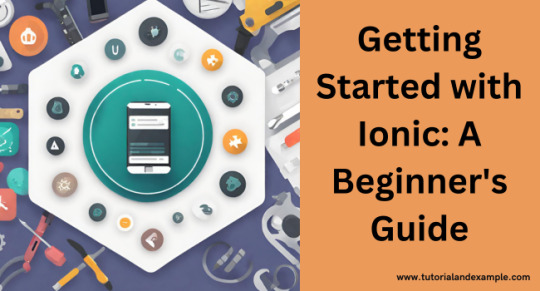
Learn to build cross-platform mobile apps using Ionic. This tutorial covers everything from setup to advanced features, ensuring a smooth development process with Angular, React, or Vue integration.
0 notes
Text
Sodium Chlorine

Sodium Chloride Formula
Sodium Chlorine Formula
Sodium Chloride Ionic Bonds
Sodium Plus Chlorine
Sodium + Chlorine = Sodium Chloride
Sodium, a very reactive metal which reacts with chlorine gas and produces sodium chloride, the neutral salt. https://foxxp46.tumblr.com/post/653771676997287936/drum-roll-sound. Sodium is oxidized to sodium cation (Na+) and chlorine gas is reduced to chloride anions (Cl-).
Uses & Benefits. Sodium chloride is essential to maintain the electrolyte balance of fluids in a person’s body. If levels of electrolytes become too low or too high, a person can become dehydrated or over hydrated, according to U.S. National Library of Medicine. Sodium chloride has been used to flavor and preserve foods for thousands of years. Large quantities of sodium chloride are used in many industrial processes, and it is a major source of sodium and chlorine compounds used as feedstocks for further chemical syntheses. A second major application of sodium chloride is de-icing of roadways in sub-freezing weather. Sodium Chloride is a metal halide composed of sodium and chloride with sodium and chloride replacement capabilities. When depleted in the body, sodium must be replaced in order to maintain intracellular osmolarity, nerve conduction, muscle contraction and normal renal function. Great buy if you want to make chlorine dioxide MMS solution. You will end up with 3 four ounce bottles of 30% sodium chlorite solution. You need the acid based activator, citric acid at 50% solution works great. Better than paying the same price for 1 bottle from MMS sellers. Sodium Hypochlorite replaces many other forms of chlorine because of the ease of use and relatively safe handling and storage requirements. There is a trend by many municipalities to convert gas chlorine systems to liquid systems because of the hazards associated with gas chlorine use. Sodium Hypochlo.
Mechanism of the reaction
We know sodium is a very active metal and chlorine is also a very reactive non-metal. Usually, metals like to eliminate electrons and non-metals such as halogens like to accept electrons.
Sodium readily eliminate its last shell electrons become Na+ cation and chlorine accepts that electron to form Cl- anion.
Balanced chemical equation of Na + Cl2 reaction
Na + Cl2 → 2NaCl
Two moles of chlorine gas reacts with one mole of sodium to produce two moles of sodium chloride.
It is easy to balance this reaction by inspection method than redox method. Redox method will take much time. But it is useful in balancing large redox equations.

How to balance the reaction from redox method?
This is a so easy redox reaction to balance and if you are beginner to balancing equations, this is also an good example to start your redox reaction balancing.
Sodium is oxidized from 0 oxidation state and to +1 oxidation state. Chlorine is reduced to -1 oxidation state from 0 oxidation state. Write oxidation numbers if each atom close to the atoms.
Check the number of atoms of oxidized and reduced in the reaction (left and right side) and balance them if they are not balance, as the next step. In left side, there are two chlorine atoms. To balance them, make two sodium chloride in the right side. Then there are two sodium atoms in the right side of the reaction, but only one in the left side. Therefore, make two sodium atoms in the left.
Next, find oxidation number differences of oxidized atoms (sodium to sodium ion) and reduced atoms (chlorine to chloride). Oxidation number difference of sodium is two and for chlorine it is two. So they are same and cancel out each other.
Physical changes of the reaction
The solid reactant, sodium reacts with green-yellow gaseous chlorine and produce solid sodium chloride which is a white crystalline solid.
Reaction rate
This reaction occurs in a rapid rate because both reactants are very reactive. Sodium is a group 1 metal which likes to remove its outer electrons and chlorine desired to take electrons from outside.
Enthalpy of sodium and chlorine reaction
Reaction of sodium and chlorine is an exothermic one (heat is released from the reaction). Enthalpy of the reaction is taken as enthalpy of formation of two moles sodium chloride.
Standard enthalpy of reaction = -411.12 kJ
Entropy of the reaction (2980C) = 72.10 J/(K mol)
Let's do a simple calculation.
You are going to mix 4 mol of sodium and 2 mol of chlorine gas. How much energy is released from the reaction? Standard enthalpy of formation of sodium chloride = -411.120 kJ/mol
Ookla internet speed. Test your Internet connection bandwidth to locations around the world with this interactive broadband speed test from Ookla. Our mission at Speedtest by Ookla® is to make the internet faster by providing data and insights on real-world internet speeds. With billions of tests worldwide, we meet you where you are with apps for the devices you use most.
Definition of Standard enthalpy of formation of sodium chloride: When 1 mol of sodium chloride is formed, 411.120 kJ is released to the outside. If 2 mol of sodium chloride is formed, 411.120 * 2 kJ is released to the outside.
Now you know, released heat depends on the formed sodium chloride amount. Now you now we have to find out how much sodium chloride is produced in this question.
According to the stoichiometry, to react with 1 mol of chlorine gas, 2 mol of sodium is required. Because of this, to react with 2 mol of chlorine gas, 4 mol of sodium is required and there is 4 mol at the beginning of the reaction.
Released heat = 411.120 kJ/mol* 4 mol
Released heat = 1644.480 kJ
How to know, reaction was occurred?
If you mix considerable amount of chlorine gas and sodium, you can see the reaction is being occurred beacause reaction beaker will be red colour due to emission of large heat. If amount of reactants is low, perform qualitative analysis testings for sodium ion and chloride ion.
Questions
the product metal sodium reacts with clorine gas in a composition reaction
When sodium reacts with clorine gas, sodium chloride (NaCl) is given as the product. Yes. This is a composition reaction because two compounds combine together and produce one compound as product.
I want to prepare sodium chloride by a reaction. I have studied several reactions possible for sodium chloride production. One way is reaction of sodium and chlorine gas. Other way is reaction of hydrochloric acid and aqueous sodium hydroxide reaction. I want to know, what is the best method to prepare sodium chloride from these two methods?
First thing is, in which phase sodium chloride want? Solid or aqueous or liquid NaCl? You have to plan your method according to the physical state of sodium chloride.

Reaction of sodium and chlorine is the direct way to prepare sodium chloride if you need solid NaCl. But, this reaction is too dangerous because it emitts large amount of energy and chlorine is a deathly toxic gas.
In the second method, you can prepare sodium chloride in aqueous state. So you need to remove water by a separation method, if you need solid sodium chloride. If you need aqueous sodium chloride, this is the best way to do.
What's about potassium and chlorine? Is it similar to sodium and chlorine reaction?
Yes. Potassium reacts with chlorine and produce potassium chloride.
2K + Cl2 → 2KCl
sodium and chlorine word equation?
Sodium + Chlorine gas → Sodium chloride
lithium metal reaction with chlorine gas equation
Lithium reacts with chlorine gas as sodium does. So equation is very similar to sodium and chlorine gas reaction.
2Li + Cl2 → 2LiCl
solid sodium reacts with chlorine gas to produce solid sodium chloride, is this true?
Yes. reaction happens.
what is the reaction equation for sodium metal and chlorine gas
Na + Cl2 → NaCl , this is not the balaced equation. This equation denotes only reactants and products.
na cl2 which is toxic?
Chlorine (Cl2) is very toxic and should be worked very carefully to avoid any injuries to people?
burning sodium metal in chlorine gas to form sodium chloride is what type of reaction
It is a combining reaction. Two reactants combine together to produce one product. Sodium and chlorine are the two reactants and sodium chloride is the only product.
word equation for sodium and chlorine
Solid sodium metal+ Chlorine gas → Solid sodium chloride
Related Tutorials to Sodium and and chlorine
Sodium hydroxide and chlorine gas reactionChloride ion testing Alkali earth metal chemistry Alkali metals chemistryAmphoteric Compounds Reacts with NaOH Identify cations by precipitating Precipitates compounds coloursOxidation Numbers of Elements in Periodic Table Sodium Carbonate Manufacturing Process
Lewis structures
P2O5 lewis structureOH- lewis structureAmmonium ion (NH4+) lewis structureH2CO3 lewis structure
(redirected from Sodium chlorine) Also found in: Dictionary, Thesaurus, Encyclopedia.
sodium
(so´de-um)
a chemical element, atomic number 11, atomic weight 22.990, symbol Na. (See Appendix 6.) Sodium is the major cation of the extracellular fluid, constituting 90 to 95 per cent of all cations in the blood plasma and interstitial fluid; it thus determines the osmolality of the extracellular fluid. The serum sodium concentration is normally about 140 mEq/L. If the sodium level and osmolality fall, osmoreceptors in the hypothalamus are stimulated and cause the release of antidiuretic hormone from the posterior lobe of the pituitary gland. This hormone increases the absorption of water in the collecting ducts of the kidneys so that water is conserved while sodium and other electrolytes are excreted in the urine. If the sodium level and osmolality rise, neurons in the thirst center of the hypothalamus are stimulated. The thirsty person then drinks enough water to restore the osmolality of the extracellular fluid to the normal level. A decrease in the serum sodium concentration (hyponatremia) can occur in a variety of conditions. It is often associated with deficient fluid volume due to diarrhea or vomiting when water is replaced faster than sodium. It can also occur in syndrome of inappropriate antidiuretic hormone, in the late stages of congestive heart failure or cirrhosis of the liver, in acute or chronic renal failure, and in diuretic therapy. An increase in the serum sodium concentration (hypernatremia) occurs when insensible water loss is not replaced by drinking, as in a comatose patient with diabetes insipidus.
sodium acetate a source of sodium ions for hemodialysis and peritoneal dialysis, as well as a systemic and urinary alkalizer.
sodium ascorbate an antiscorbutic vitamin and nutritional supplement for parenteral administration. It is also used as an aid to deferoxamine therapy in the treatment of chronic iron toxicity.
sodium benzoate an antifungal agent also used in a test of liver function.
sodium bicarbonate NaHCO3, a white powder commonly found in households. It has a wide variety of uses in chemistry, in pharmaceuticals, and in consumer products. It is sometimes taken in water as a remedy for acid indigestion but should not be used regularly since when taken in excess it tends to cause alkalosis. It can be mixed with water and applied as a paste for relief of pain in treatment of minor burns and insect bites and stings. A cupful in the bath water may help relieve itching caused by an allergic reaction. Called also baking soda and bicarbonate of soda.
sodium carbonate a compound now used primarily as an alkalizing agent in pharmaceuticals; it has been used as a lotion or bath in the treatment of scaly skin, and as a detergent.
sodium chloride common table salt, a necessary constituent of the body and therefore of the diet, involved in maintaining osmotic tension of blood and tissues; uses include replenishment of electrolytes in the body, irrigation of wounds and body cavities, enema, inhaled mucolytic, topical osmotic ophthalmic agent, and preparation of pharmaceuticals. Called also salt.
sodium citrate a sodium salt of citric acid, used as an anticoagulant for blood or plasma that is to be fractionated or for blood that is to be stored. It is also administered orally as a urinary alkalizer.
dibasic sodium phosphate a salt of phosphoric acid; used alone or in combination with other phosphate compounds, it is given intravenously as an electrolyte replenisher, orally or rectally as a laxative, and orally as a urinary acidifier and for prevention of kidney stones.
sodium ferric gluconate a hematinic used especially in treatment of hemodialysis patients with iron deficiency anemia who are also receiving erythropoietin therapy. Administered by intravenous injection.
sodium fluoride a dental caries preventative used in fluoridation of drinking water or applied topically to teeth. Topical preparations include gels (sodium fluoride and phosphoric acid gel, also called APF gel) and solutions (sodium fluoride and acidulated phosphate topical solution, also called APF solution).
sodium hydroxide NaOH, a strongly alkaline and caustic compound; used as an alkalizing agent in pharmaceuticals.
sodium hypochlorite a compound having germicidal, deodorizing, and bleaching properties; used in solution to disinfect utensils, and in diluted form (Dakin's solution) as a local antibacterial.
sodium iodide a compound used as a source of iodine.
sodium lactate a compound used in solution to replenish body fluids and electrolytes.
monobasic sodium phosphate
1. a monosodium salt of phosphoric acid; used in buffer solutions, as a urinary acidifier, as a laxative, and as a source of phosphorus in hypophosphatemia, often in combination with potassium phosphate.
2. a monosodium salt of phosphoric acid; used in buffer solutions. Used alone or in combination with other phosphate compounds, it is given intravenously as an electrolyte replenisher, orally or rectally as a laxative, and orally as a urinary acidifier and for prevention of kidney stones.
sodium monofluorophosphate a dental caries preventative applied topically to the teeth.
sodium nitrite an antidote for cyanide poisoning; also used as a preservative in cured meats and other foods.
sodium nitroprusside an antihypertensive agent used in the treatment of acute congestive heart failure and of hypertensive crisis and to produce controlled hypotension during surgery; also used as a reagent.
sodium phenylbutyrate an agent used as adjunctive treatment to control the hyperammonemia of pediatric urea cycle enzyme disorders.
sodium phosphate any of various compounds of sodium and phosphoric acid; usually specifically dibasic sodium phosphate.
sodium polystyrene sulfonate an ion-exchange resin used for removal of potassium ions in hyperkalemia, administered orally or rectally.
sodium propionate a salt used as an antifungal preservative in foods and pharmaceuticals and as a topical antifungal agent.
sodium sulfate a cathartic and laxative.
sodium thiosulfate a compound used intravenously as an antidote for cyanide poisoning, in foot baths for prophylaxis of ringworm, and as a topical antifungal agent for tinea versicolor. Also used in measuring the volume of extracellular body fluid and the renal glomerular filtration rate.
Miller-Keane Encyclopedia and Dictionary of Medicine, Nursing, and Allied Health, Seventh Edition. © 2003 by Saunders, an imprint of Elsevier, Inc. All rights reserved.
sodium chloride
Minims Sodium Chloride (CA), Slo-Salt, Slow Sodium
Pharmacologic class: Electrolyte supplement
Therapeutic class: Sodium replacement
Pregnancy risk category C
Action
Replaces deficiencies of sodium and chloride and maintains these electrolytes at adequate levels
Availability
Injection: 0.45% sodium chloride-25 ml, 50 ml, 150 ml, 250 ml, 500 ml, 1,000 ml; 0.9% sodium chloride-2 ml, 3 ml, 5 ml, 10 ml, 20 ml, 25 ml, 30 ml, 50 ml, 100 ml, 150 ml, 250 ml, 500 ml, 1,000 ml; 3% sodium chloride-500 ml; 5% sodium chloride-500 ml; 14.6% sodium chloride-20 ml, 40 ml, 200 ml; 23.4% sodium chloride-30 ml, 50 ml, 100 ml, 200 ml
Tablets: 650 mg, 1 g, 2.25 g

Tablets (slow-release): 600 mg
Indications and dosages
➣ Water and sodium chloride replacement; metabolic alkalosis; to dilute or dissolve drugs for I.V., I.M., or subcutaneous use; to flush I.V. catheter; as a priming solution in hemodialysis; to initiate or end blood transfusions
Adults: 0.9% sodium chloride (isotonic solution) with dosage individualized
➣ Hydrating solution; hyperosmolar diabetes
Adults: 0.45% sodium chloride (hypotonic solution) with dosage individualized
➣ Rapid fluid and electrolyte replacement in hyponatremia and hypochloremia; severe sodium depletion; drastic body water dilution after excessive water intake
Adults: 3% or 5% sodium chloride (hypertonic solution) with dosage individualized, given by slow I.V. infusion with close monitoring of electrolyte levels
➣ Heat cramps caused by excessive perspiration
Adults: See product label.
Contraindications

• Normal or elevated electrolyte levels (with 3% and 5% solutions)
• Fluid retention
Precautions
Sodium Chloride Formula
Use cautiously in:
• renal impairment, heart failure, edema or sodium retention, hypoproteinemia
• surgical patients.
Administration
☞ Be aware that sodium chloride injection is a high-alert drug.
• Dilute I.V. dose per product label. Infuse slow I.V. to minimize risk of pulmonary edema.
☞ Don't confuse normal saline solution for injection with concentrates meant for use in total parenteral nutrition.
• Avoid salt tablets for heat cramps; they may pass through GI tract undigested, causing vomiting and potassium loss.
Adverse reactions
CV: edema (when given too rapidly or in excess), thrombophlebitis, heart failure exacerbation
Metabolic: fluid and electrolyte disturbances (such as hypernatremia and hyperphosphatemia), aggravation of existing metabolic acidosis (with excessive infusion)
Respiratory: pulmonary edema
Other: pain, swelling, local tenderness, abscess, or tissue necrosis at I.V. site
Interactions
Drug-diagnostic tests.Phosphate, potassium, sodium: increased levels
Patient monitoring
• Monitor electrolyte levels and blood chemistry results.
☞ Watch for signs and symptoms of pulmonary edema or worsening heart failure.
• Carefully monitor vital signs, fluid balance, weight, and cardiovascular status.
• Assess injection site closely to help prevent tissue necrosis and thrombophlebitis.
Patient teaching
☞ Teach patient to recognize and immediately report serious adverse reactions, such as breathing problems or swelling.
• Instruct patient to report pain, tenderness, or swelling at injection site.
• As appropriate, review all other significant and life-threatening adverse reactions and interactions, especially those related to the tests mentioned above.
McGraw-Hill Nurse's Drug Handbook, 7th Ed. Copyright © 2013 by The McGraw-Hill Companies, Inc. All rights reserved
so·di·um chlo·ride
the chief ionic component of blood and other bodily fluids, and urine; used to make isotonic and physiologic saline solutions, in the treatment of salt depletion, and topically for inflammatory lesions.
Farlex Partner Medical Dictionary © Farlex 2012
so·di·um chlo·ride
(sōdē-ŭm klōrīd)
Major ionic component of blood, urine, and other bodily fluids; used to make isotonic and physiologic saline solutions, to treat salt depletion, and topically for inflammatory lesions. Synonym(s): common salt.
Medical Dictionary for the Health Professions and Nursing © Farlex 2012
Sodium Chlorine Formula
sodium chloride
Common salt. A compound ubiquitous in the body. Used in the preparation of SALINE. The drug is on the WHO official list.
Collins Dictionary of Medicine © Robert M. Youngson 2004, 2005
saline, physiological
A 0.9% sterile solution of sodium chloride in water. This concentration of sodium chloride is considered approximately isotonic with the tears. It is used to store and rinse soft contact lenses, to irrigate the eye, etc. Syn. normal saline; NaCl 0.9%. Seeeyewash; irrigation; isotonic solution.
Millodot: Dictionary of Optometry and Visual Science, 7th edition. © 2009 Butterworth-Heinemann
so·di·um chlo·ride
Sodium Chloride Ionic Bonds
(sōdē-ŭm klōrīd)
Chief ionic component of blood, urine, and other body fluids; used to make isotonic and physiologic saline solutions, in the treatment of salt depletion, and topically for inflammatory lesions. Synonym(s): common salt.

Medical Dictionary for the Dental Professions © Farlex 2012
Want to thank TFD for its existence? Tell a friend about us, add a link to this page, or visit the webmaster's page for free fun content. Link to this page:
Sodium Plus Chlorine
<a href='https://medical-dictionary.thefreedictionary.com/Sodium+chlorine'>sodium chloride</a>
Sodium + Chlorine = Sodium Chloride

0 notes
Photo

Angular 10, data grids, randomness, and checking some boxes
#494 — June 26, 2020
Unsubscribe | Read on the Web
JavaScript Weekly

Lessons Learned Refactoring Optional Chaining Into a Large Codebase — Lea Verou, creator of Mavo, decided to refactor Mavo to use optional chaining (?.) and here’s some of what she discovered along the way. (As an aside, Lea was the subject of a neat 10 minute programming documentary recently – worth a watch!)
Lea Verou
A Little Bit of Plain JavaScript Can Do A Lot — For anyone more than happy to dive in and write JavaScript without dragging in an entire framework and tooling to manage it, there will be no surprises here, but this is a nice reminder otherwise. Do you always need a 'framework'? No.
Julia Evans
Creating a Voting App with Firestore and Wijmo — Learn how to build a realtime voting app quickly and easily with the Firestore database and Wijmo components. The app uses OAuth for authentication and allows users to submit and vote for ideas.
Wijmo by GrapeCity sponsor
Angular 10 Released — A major release for the popular Google-led framework, though smaller in scope than usual as Angular 9 only came out in February ;-) 10 gains a new date range picker, optional stricter settings, and an upgrade to TypeScript 3.9.
Stephen Fluin (Google)
What's Coming in TypeScript 4? — The first beta of TypeScript 4 is due any moment with a final release due in August. New bits and pieces include variadic tuple types, labelled tuples, short-cut assignment operators (e.g. ||=) and more.
Tim Perry
⚡️ Quick bytes:
Chrome 85's DevTools have gained better support for working with styles created by CSSOM APIs (such as by CSS-in-JS frameworks). There's also syntax autocompletion for optional chaining and highlighting for private fields.
There's nothing to see just yet, but NativeScript is coming to Ionic.
The creator of AlpineJS has written about how he's passed $100K/yr in income using GitHub Sponsors.
Did you know there's a Slack theme for VS Code? 😆
▶️ The JS Party podcast crew discusses how their use of JavaScript syntax evolves (or not) over time.
engineeringblogs.xyz is a new aggregator site (by us!) that brings together what 507 (so far) product and software engineering blogs are talking about. Worth a skim.
💻 Jobs
JavaScript Developer at X-Team (Remote) — Join X-Team and work on projects for companies like Riot Games, FOX, Coinbase, and more. Work from anywhere.
X-Team
Find a Job Through Vettery — Vettery specializes in tech roles and is completely free for job seekers. Create a profile to get started.
Vettery
📚 Tutorials, Opinions and Stories
ECMAScript Proposal: Private Static Methods and Accessors in Classes — Dr. Axel takes a look at another forthcoming language feature (in this case being at stage 3 and already supported by Babel and elsewhere).
Dr. Axel Rauschmayer
npm v7 Series: Why Keep package-lock.json? — If npm v7 is going to support yarn.lock files, then why keep package-lock.json around as well? Isaac goes into some depth as to how yarn.lock works and why it doesn’t quite suit every npm use case.
Isaac Z. Schlueter
How to Dynamically Get All CSS Custom Properties on a Page — Some fun DOM and stylesheet wrangling on display here.
Tyler Gaw
Stream Chat API & JavaScript SDK for Custom Chat Apps — Build real-time chat in less time. Rapidly ship in-app messaging with our highly reliable chat infrastructure.
Stream sponsor
Getting Started with Oak for Building HTTP Services in Deno — A comprehensive Oak with Deno tutorial for beginners (which, I guess, we all are when it comes to Deno). Oak is essentially the most popular option for building HTTP-based apps in Deno right now.
Robin Wieruch
Understanding Generators in JavaScript — Generator functions can be paused and resumed and yield multiple values over time and were introduced in ES6/ES2015.
Tania Rascia
Build a CRUD App with Vue.js, Spring Boot, and Kotlin — It’s a fact of life that not everyone is building apps with JavaScript at every level of the stack. Sometimes.. people use Java too 🤫
Andrew Hughes
▶ Creating a Basic Implemention of 'Subway Surfers' — No modules, webpack or such-like here.. just exploring the joy of throwing a game mechanic together quickly using rough and ready JavaScript. Love it.
Shawn Beaton
Rubber Duck Debugging for JavaScript Developers — When you’re stuck with something, why not talk to a rubber duck?
Valeri Karpov
🔧 Code & Tools
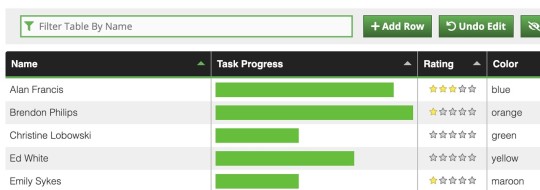
Tabulator 4.7: An Interactive Table and Data Grid Library — Supports all major browsers and can be used with Angular, Vue, and React if you wish. 4.7 is a substantial release. Among other things is a new layout mode that resizes the table container to fit the data (example).
Oli Folkerd
Tragopan: A Minimal Dependency-Free Pan/Zoom Library — Try it out here. Claims to work faster due to use of native browser scrolling for panning (left/right/up/down) and transform/scale for zooming.
team.video
Builds Run Faster on Buildkite 🏃♀️ — Build times <5 mins at any scale. Self-hosted agents work with all languages, source control tools & platforms.
Buildkite sponsor
React Query 2: Hooks for Fetching, Caching and Updating Async Data — React Query is well worth checking out and has extensive documentation and even its own devtools. Main repo.
Tanner Linsley
Rando.js: A Helper for Making Randomness Easier — The rando function lets you get random integers in a range, floats in a range, pick between multiple items, return a random element from an array, and more. There’s also randosequence for a more shuffle-like experience.
nastyox
jinabox.js: A Customizable Omnibox for AI Powered Searching — Designed to be used with a Jina back-end. It’s all open source, but will take some digging around to understand fully.
Jina AI
MongoDB Is Easy. Now Make It Powerful. Free Download for 30 Days.
Studio 3T sponsor
IntersectionObserver Visualizer — If you’re new to using the IntersectionObserver API, this useful interactive demo might help you comprehend it a little better.
michelle barker
Polly.js 5.0: Record, Replay, and Stub HTTP Interactions
Netflix
Vest: Effortless Validations Inspired by Testing Frameworks — If you’re used to unit testing, the syntax used here will be familiar.
Evyatar
👻 Scary Item of the Week
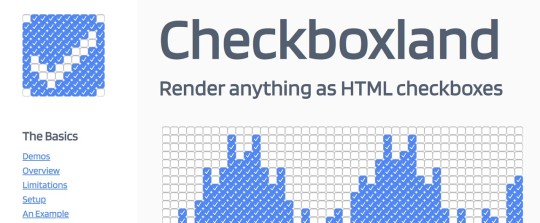
Checkboxland: Render 'Anything' as HTML Checkboxes — This frivolous experiment is equal parts terrifying and impressive. It’s a JS library that displays animations, text, and arbitrary data using nothing but HTML checkboxes and, to be fair, they’ve presented it really well!
Bryan Braun
by via JavaScript Weekly https://ift.tt/3g53MDU
0 notes
Link
3 days left Free Courses
#java scripting tutorial for beginners ionic framework ionic firebase facebook login android manifest of undefined javascript javascript tuto#javascript#vue#angular#nodejs#100daysofcode#javascript full course#react#react native
0 notes
Text
Top Blogs to Follow on Hybrid App Development
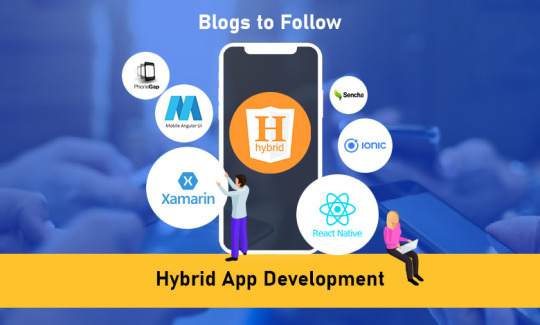
Today, Hybrid mobile app development has become mainstream for mobile app development since the majority of mobile developers and leading app development companies are preferring it over others. Because it enables quick development of mobile applications using HTML5 and can run on different platforms like iOS and Android. On the other hand, the developers are not required to learn native programming languages like Swift, Objective-C from scratch. They can utilize their existing knowledge of web development technologies like HTML5, CSS3 and JavaScript. Also, the introduction of several new and advanced HTML5 SDKs and mobile development frameworks such as Sencha Touch, Ionic Framework and Telerik has completely changed the scenario by making hybrid app development simpler and more effective.
So, if you are looking for resources on hybrid mobile app development like practical tips and insightful knowledge. Here we are providing a list of blogs and bloggers you must read and follow on Hybrid app development. These blogs would not only help beginners but also the professional mobile app developers will be benefited with in-depth knowledge about mobile development technologies and best practices in hybrid app development. Let’s have a look.
List of Top Blogs to Follow on Hybrid App Development
Joshua Morony

Joshua Morony is a professional mobile developer who shares his knowledge and experience extensively on HTML5 mobile application development. It covers different technologies like Ionic, Phaser, Sencha Touch. Other than this, you can find several useful tutorials and quality posts on his blog covering topics like Creating Google Maps component in Ionic 2, Local Storage Options for PhoneGap Applications and Using the HTML5 Canvas Element in Sencha Touch. Also, Joshua Morony has published several books. Few of them are Beginners Guide To Sencha Touch, PhoneGap Build Quick start Guide, and others.
Gone Hybrid

If you are looking for the latest tips and practical techniques for hybrid mobile app development, you can consider Gone Hybrid as one of the most resourceful blogs on this topic. The blog will avail you with several tutorials and informative articles on topics like Ionic Lab, Ionic App, Ionic framework, Angular and more. Other than this, you can get insights or in-depth knowledge for mobile app development using Ionic 2 & Angular 2, writing automated tests for Ionic Apps, setting Quick Actions with 3D Touch on iPhone 6S for Ionic Apps and more.
Andrew McGivery

Andrew McGivery’s blog is dedicated to delivering knowledge of the Ionic framework. If you are looking for tutorials and other resources on Ionic app development, you can mull over Andrew McGivery blog as it is one of the most popular blogs in this arena. Here, you will be availed with significant information, source code and other resources to learn about the Ionic framework including well-prepared tutorials and how-to-posts. Furthermore, you will find blogs on topics like Understanding Ionic’s infinite scroll, Unit Testing Your Ionic Framework App, Understanding Filters in Ionic, and more.
The Official Ionic Blog
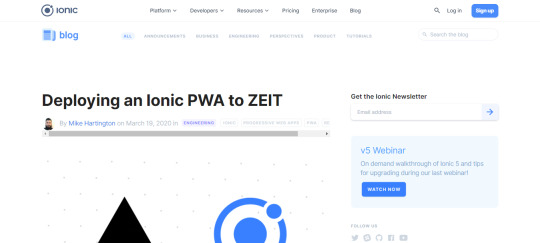
The Official Ionic Blog is a platform for those who embrace modern hybrid app development technologies like Angular and Ionic. On this blog, you will get a wide range of posts on features, updates and news related to Ionic apps and Ionic framework. Other than this, the blog provides posts and tutorials on topics like the Internet of Things, Ionic, and TypeScript, Ionic IoT applications, integration with Backend and more.
The Polyglot Developer
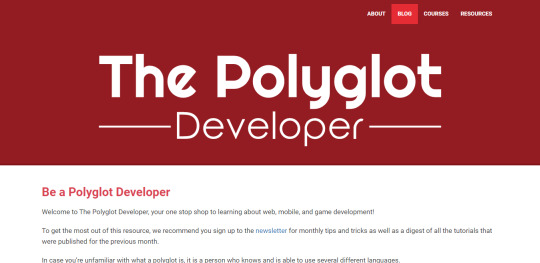
The Polyglot Developer is a blog from Nic Raboy, who is a mobile application developer and shares knowledge on programming. On this blog, you will get a range of tutorials related to topics on mobile and web app development and game development as well. Also, there are video tutorials and online courses as well on topics such as hybrid app development with the Ionic framework, hybrid mobile application development for Android and iOS using NativeScript by Telerik and Android development using native Android SDK and Java.
Sencha Touch Developer

Sencha Touch Developer is one of the most popular mobile app development companies based in the United States. The company keeps on updating its blogs by publishing new and useful posts on topics related to Sencha application development, Sencha apps, Sencha Touch framework and more. In addition to this, you can read posts on several other important topics such as the development of hybrid iOS apps, cross-app development while containing the native look in a hybrid app.
Originally Published at AllNetArticles, on March 25, 2020
0 notes